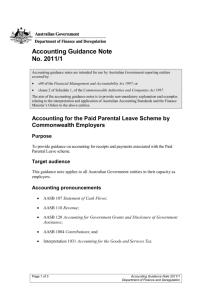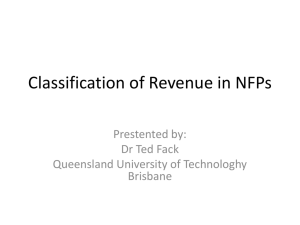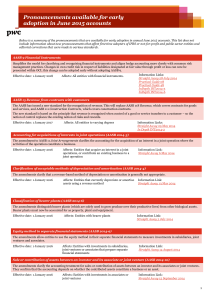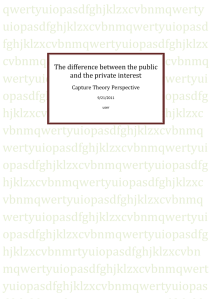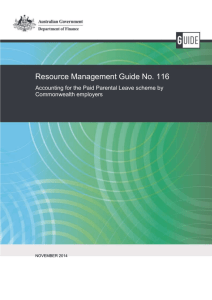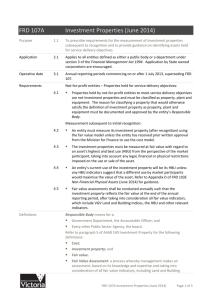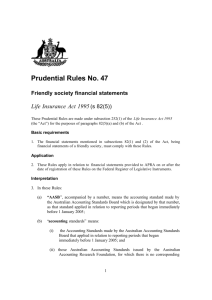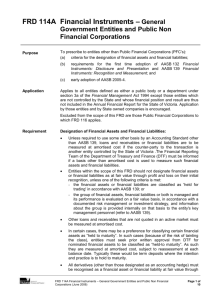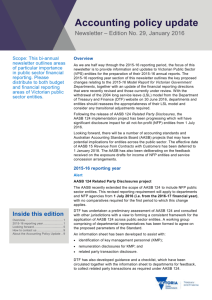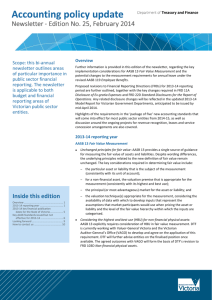New Statement of Changes in Member Benefits
advertisement
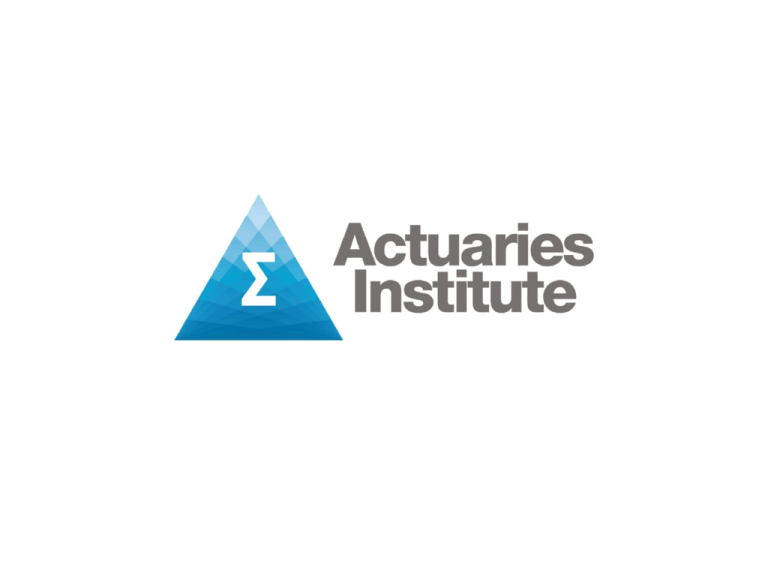
AASB1056 Superannuation Entities Update from the AASB and the Institute August 2014 Agenda • Welcome • AASB’s perspective • Key areas for actuaries Background • On 5 June 2014, the Australian Accounting Standards Board issued a new Standard applying to superannuation entities. • AASB 1056 Superannuation Entities replaces AAS 25 Financial Reporting by Superannuation Plans. • Effective for reporting periods commencing on or after 1 July 2016 (may be adopted early) Background • AASB 1056 introduces a number of significant changes from AAS 25, including: – more integration with other standards – new definitions – revised composition of the primary financial statements – use of 'fair value' instead of 'net market value‘ – the recognition and measurement of member liabilities – disclosures. Update on AASB 1056 Superannuation Entities Angus Thomson Glenn Brady August 2014 © AASB Scope and application • Applies to large APRA-regulated superannuation entities (not SAFs, not PSTs) • Replaces AAS 25, which AASB regarded as out-ofstep with other standards and the superannuation industry environment • AASB 1056 effective for periods beginning on or after 1 July 2016 (can be applied early) • Transition – retrospective application • One year of comparative information required © AASB 7 General approach to AASB 1056 • Benchmark to Aust. Accounting Standards (IFRS) • Depart from AAS when necessary, for example: – no use of OCI – added statement of changes in member benefits – DB liability measurement different from employer perspective – scope DC liabilities into FI credit, market and liquidity risk disclosures • Treat DB, DC, hybrids the same to extent feasible © AASB 8 Financial statements • Statement of changes in member benefits – effectively a reconciliation of opening and closing balances of member benefit liabilities, including: – various contributions in/transfers out – contribution taxes – benefits allocated • Statement of changes in reserves – main items would typically be: – movements in operational risk reserves – changes in surplus/deficit for DB funds © AASB 9 DB liabilities • Accrued member benefits measurement objective: ‘amount of a portfolio of investments that would be needed as at the reporting date to yield future net cash inflows that would be sufficient to meet accrued benefits as at that date when they are expected to fall due’ – Net cash inflows might be contractual or noncontractual – May or may not be based on actual investments, but generally expect relationship with investment plan • Shortcuts ok when results would be materially the same (meet the measurement objective) © AASB 10 Fair value • Main measurement notions in AAS are cost, FV, and FV less costs to sell (FV includes FVTPL and FVTOCI) • FV less costs to sell generally only used when items held for sale/discontinued or in impairment testing • Change from NMV not expected to be material for most asset classes • Custodians/administrators familiar with FV measurement due to requirements on other investment vehicles © AASB 11 Insurance arrangements • Judgement needed to determine if plan is an insurer or only an agent • Indicators of agency include: – claims paid only if reinsurer pays – premiums paid through plan for admin. reasons – premiums set directly by reference to reinsurance • Not necessarily insurance just because: – there’s group cover – claims are paid via the plan • Plans that are insurers need to recognise insurance assets, liabilities, premiums, claims, reinsurance … © AASB 12 Disaggregated Information • Originally proposed applying AASB 8 on segments to show overall plan management • Constituents provided disparate views – asset-type focus, accumulation versus pension focus – but most agreed it would not be helpful • AASB 1056 adopts a member-type focus – a hybrid would generally need to provide disaggregated disclosures (due to there being different risk-benefit exposures) • Examples might include a two-column statement of changes in member benefits © AASB 13 Disclaimer This presentation provides personal views of the presenter and does not necessarily represent the views of the AASB or other AASB staff. Its contents are for general information only and do not constitute advice. The AASB expressly disclaims all liability for any loss or damages arising from reliance upon any information in this presentation. This presentation is not to be reproduced, distributed or referred to in a public document without the express prior approval of AASB staff © AASB 14 Key areas for actuaries What’s New? • New requirements (not in AAS 25) – Fair value – Statement of change in member benefits – Actuarial estimated member liabilities – Employer-sponsor receivables – Reserves – Insurance arrangements Presentation of financial statements • Financial statement templates to be updated for new format • Restated comparative information to be prepared for financial year commencing on or after 1 July 2015 • Consider what additional accounting reconciliations are required • Ensure systems are adequate for extraction of new information required (e.g. movements in reserves, movements in member benefits) Fair Value • Assets and Liabilities measured at Fair Value (i.e. without disposal costs) – Aligns with requirements of AASB 13 Fair Value Measurement with respect to determining fair value New Statement of Changes in Member Benefits • A statement of changes in member benefits is required to be presented that includes: a) contributions, rollovers and transfers from employers and members; b) income tax on contributions; c) benefits to members; d) net investment income allocated to members; and e) administration expenses charged to members • Contributions from employers and members and benefits to members are regarded as affecting member liabilities, not as income and expenses, and therefore presented in statement of changes in member benefits New Statement of Changes in Member Benefits • Annual measurement of member benefits – Requires both DC and DB member liabilities to be recognised and measured as the amount of accrued benefits. • Determine disclosure requirements for difference (if any) between net assets attributable to defined benefit members and the associated liabilities Member Liabilities • Annual measurement of member benefits for Defined Benefit funds – Determine methodology to be used to measure DB member liabilities on an annual basis – Shorthand methods permitted • Disclose the basis for assumptions used in measurement for defined benefit member liabilities and perform a sensitivity analysis of the key assumptions Employer-sponsor receivables • Requires an asset to be recognised to the extent: – there is a receivable from an employer in respect of a difference between a DB member liability and the fair value of DB assets available, and – the fund has a contractual right to that funding • Measured at its ‘intrinsic value’ (the amount of the difference, unless capped) Reserves • Superannuation funds often have equity in the form of reserves – Particularly for defined benefit funds • Must present movements in such reserves in the statement of changes in equity – Funds can use judgement for statement title (e.g. Statement of Changes in Reserves) Insurance • Funds must consider the nature of any insurance arrangements – are they acting in the capacity of an insurer or as an agent? – Agent only – DB self insured – DC self insured • Actuarial involvement may be required by funds to measure insurance liabilities Discussion
